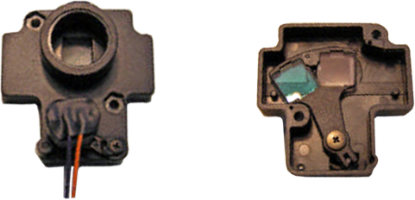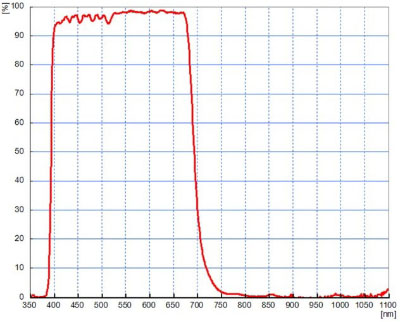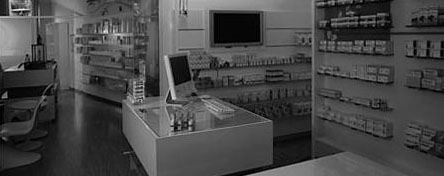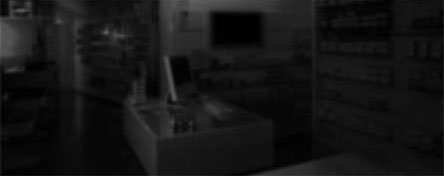CCTV Technologies
To explain the operation of the IR Filters, defined Day&Night, let's start with the illustration of the frequency spectrum.

It is generally assumed that the visible part of frequencies spectrum, therefore what is detected by the human eye, is in the range 380÷770 nm. The sensors used in the cameras have greater sensitivity, with a spectrum in the 100÷1000 nm range. This implies that the sensors react, in addition to visible light, to a small UV component (100÷230 nm) and an IR component (770÷1000 nm)
The UV component, from a "Vision" point of view, can be neglected while the IR component plays a fundamental role; just think that the IR illuminators used with cameras operate at the frequency of 850 nm (in some cases even 940 nm).
DN Filters operate in such a way as to allow cameras to exploit the IR component only when there is a real need, they are devices interposed between the optical body and the sensor, hereinafter an example of a mechanical filter:

The first image shows the complete filter (closed) while the second the same open with the mechanism to which the filter is anchored rotated to ensure that it does not affect the light passing through the filter. When the filter is inserted it allows only a part of the frequencies coming from the optic body to pass, those in the visible, as indicated in the following graph:

On the contrary, when the filter is not active it also allows the passage of the frequencies in the right part of the graph, which represents the IR component. Unfortunately, however, this component is "darker" than the visible one, so when it is present it tends to darken the entire image, for this reason the filter is generally active during the day. On the contrary, during the night the visible component is of little entity so it is useful to also use the IR component by removing the filter.
Below are the Day and Night effects with the filter OFF and ON.
| OFF | ON | |
| Day |  |
 |
| Night |  |
 |
During the day, with the filter active, the image is brighter and richer in detail, during the night, with the filter removed, the IR component still allows you to observe the interior of the store.

 English (United Kingdom)
English (United Kingdom)  Italiano (Italia)
Italiano (Italia) 
